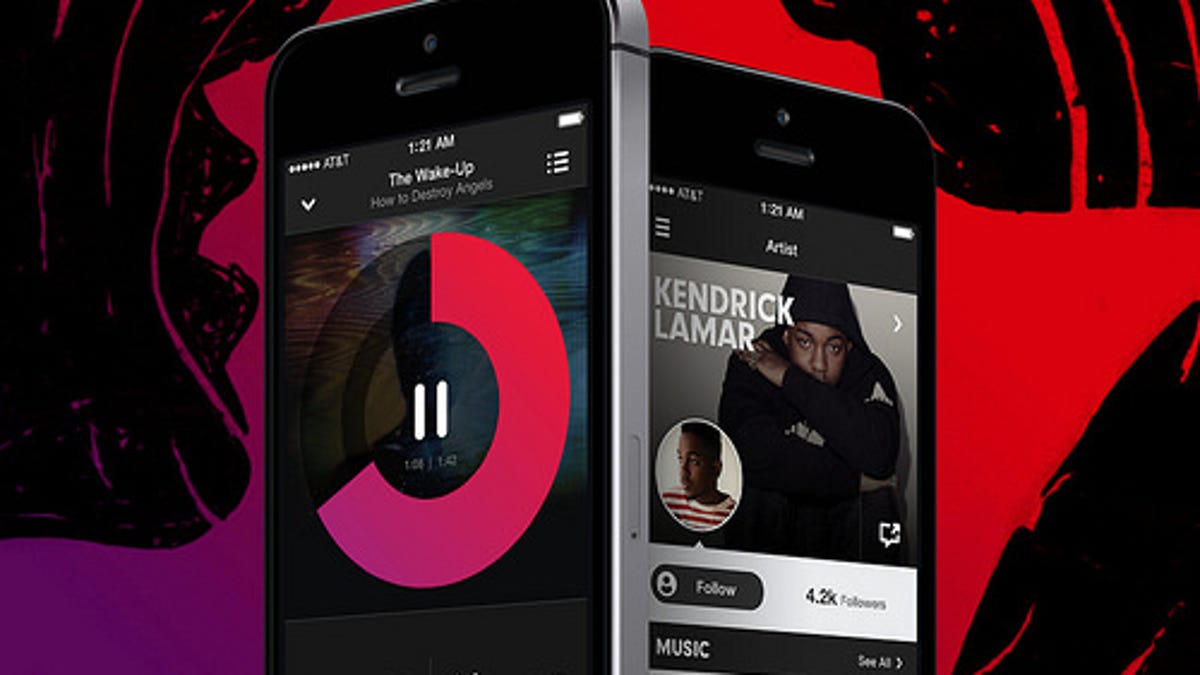Beats Music turns 7 out of 10 free-trial users to paying ones?
The new subscription music service is getting more than 70 percent of free-trial users to pay once the introductory period lapses, according to a Bloomberg report.

Streaming-music service Beats Music signed up 1,000 people a day as paying subscribers before any free trials, and is keeping more than 70 percent of AT&T free-trial users as paying customers once those introductory terms end, according to a Bloomberg report.
The report cited unnamed people familiar with the matter, reporting figures that were provided to investors in February. Beats Music launched publicly on January 21 with AT&T offering "Family" customers a 90-day free trial and individual AT&T wireless customers a 30-day free trial. Before January, Beats Music was in a period of private alpha and beta testing.
If the 70 percent retention metric is accurate, Beats Music -- a $9.99-a-month service that streams music both on demand and programmed by curators and tastemakers -- would be extraordinarily successful among its peers at converting free users to paying ones.
In May of last year, Pandora said its paying subscribers surpassed 2.5 million at a time when it had 70.1 million active listeners, or about 3.6 percent. Spotify hasn't updated its subscriber stats in a year, but at that time it had 6 million paying members out of 24 million active users, or 25 percent. Considering Pandora and Spotify both have quite a few more registered users than active ones, those percentages would drop more.
However, Spotify and Pandora have both worked to provide more features to users who aren't paying. Pandora makes less than a fifth of its revenue from subscriber fees, opting instead to bring terrestrial radio advertising dollars over to its free, ad-based online radio service. Spotify once walled off mobile listening to paying members only, but it has since unrolled the ability to listen to shuffled playlists on mobile devices without a fee.
On the other hand, Beats requires a paying membership to listen, period.
The 1,000-signups-a-day figure is a little odd, since these were said to occur before AT&T free trials began, which would then place it during a period of invitation-only alpha and beta testing. Presumably, many of these prelaunch users are unusually predisposed to paying for a streaming service, since they'd need to fit the profile of an avid early adopter to gain access during that time.
Beats Music combined the technology of on-demand music service MOG with the same kind of marketing onslaught that made Beats headphones a hit for longtime music exec Jimmy Iovine and musician Dr. Dre. Pitching itself as having a sharper, human curatorial touch than algorithm-driven streaming services like Spotify or Pandora, Beats Music has been relying on its crucial AT&T partnership and flashy advertising that targets a mainstream audience -- a Super Bowl ad with Ellen DeGeneres being the greatest example -- as it attempts to break into an already crowded field for streaming music.

